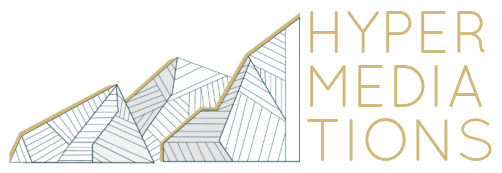How would you describe your scholarly background?
I am highly involved in studying online religious activity. I’m looking at the role of new media in relation to religious belief systems and religious information seeking behavior. Right now I am exploring this relationship within the Tibetan diaspora. Since receiving my PhD, I always have been fascinated by how new media or cutting-edge new technology work together with ancient religious traditions. Through the social shaping of technology, they can coexist in a highly impactful way. Of course, some religious traditions are doing better with their online engagement than others, but religions really have to be online nowadays in order to exist in our society.
Can you say more on the relationship between religion and media?
It depends on how we define media. We often mean “news media” when we think of “media.” It is hard to give a short answer. Religion and media are deeply interwoven. If we are talking about news media and religion, we often get a negative view of religion since these stories are more newsworthy. But as far as the relationship between religion and new media is concerned, we have to think about a complex negotiation between tradition and modernity. Studying online religion now is at the cutting edge of new media developments and we have to ask how these impact religious systems. It is a beautiful dance between the two and religion cannot exist without being mediated. In modernity, that means modern technologies and modern forms of media have to become somehow part of religious tradition.
What are the challenges and potentialities of public scholarship?
It is tricky to say “public” because this involves many aspects. One example of what it means to be a public scholar for me is my work as a member of the World Economic Forum. This is a special committee that examines the role of faith, and meets with governments, NGOs, and business leaders to discusses religion in the public sphere and in global matters. Our goal is to promote a better public understanding of religion. A lot of the public’s perception of religion is focused on the negative side of religion. But there is a massive middle ground of extremely positive, impactful, and helpful religious activities. This comes in the form of interfaith dialogue or humanitarian relief globally, which usually excludes proselytizing or waging a crusade against other religions. Unfortunately, a lot of positive aspects of religion get overshadowed by the negative aspects.
So, you think that educating the public on the role of religion is a challenge?
The challenge is that educating the public on the role of religion cannot just involve demonizing its negative aspects. Painting a positive picture is controversial in a political environment of strong far-right and far-left orientations and certain religious traditions are extreme. So, when I study online religion, I look at the good, the bad, and the ugly. Religion is not something that we can get rid of. It is very important for a lot of people and therefore it cannot be discounted or ignored. We owe it to religion to communicate some of the positive aspects.
What are some of your past or current projects of public scholarship?
My previous experiences with public scholarship includes being a talking head for local media on religion for topics like Halloween, the papal elections, or the hype of the Aztec calendar indicating the end of the world in 2012. You can find all of my media engagements at my website. My main goals were raising awareness on various issues concerning religion within our community and providing information for the public.
Over the past five years, I have been working on Virtual Tibet, which is a project that examines and engages the Tibetan diaspora community in exile. This does not just concern their connection to information and the news, but also to their ritual practices and religious authority figures. The project weaves new technological practices into an ancient religious tradition. It is sponsored by the Social Science and Humanities Research Council, Canada, and can be accessed at our website.

The first stage of this project is working with video game designing companies to create a 3D virtual reality experiences using new Oculus technology. We are creating a 3D version of the Potala Palace, which is the traditional palace of the Dalai Lama in Tibet and which is in Chinese territory now. We are developing an amazing virtual experience using Computer Generated Imagery technology where you go into the throne room and meet the Dalai Lama. He then begins a ritual and you get to watch his ritual and his transformation into the deity Chenrezig. Within the Tibetan Buddhist tradition, this is the deity of compassion and the Dalai Lama is considered a manifestation of this deity. The Dalai Lama’s people are working with us, including his web master. And we are showing monks what we are doing as we move forward. Everyone is very supportive. This is public project that is quite high in profile. We have been approached to make a documentary about us filming the Dalai Lama. It’s very exciting.
The second stage involves using advanced 3D motion capture cameras. And when you are wearing the proper equipment, you really see the rituals in 3D, which is a powerful experience for a lot of people. We will be filming the Dalai Lama doing rituals, greetings, and blessings over the next couple of years and making these available online. The third stage is turning an old Tibetan board game, which is used for religious teaching, into a video game. We are currently doing this with the Tibetan Book of the Dead.
What are any other specific goals of this project, besides benefiting the Tibetan diasporic community?
We are really creating an online religious experiences and online encounters with the Dali Lama to see what people feel, if it is authentic to them, and what kind of impact or meaning it has. The Dalai Lama is very charismatic, recognized figure. Now the public has the opportunity, when putting on the Oculus headset, to meet the Dalai Lama in his palace. It is significant because that territory was lost to the Dalai Lama and the Tibetans in exile in 1959. By creating this scenario in cyberspace, people are able to experience him in an new version of his traditional territory.
Interview by Susanne Stadlbauer

